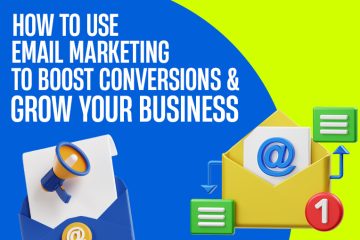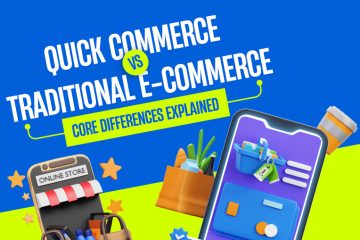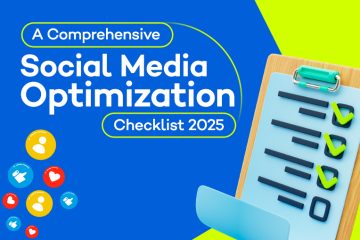In Digital World, businesses are constantly looking for high-ROI strategies that drive measurable results. Traditional marketing methods, where advertisers pay for visibility alone, are becoming less effective. Instead, performance marketing has emerged as a more data-driven, result-oriented approach, where businesses pay only when a specific action occurs, such as a click, lead, or sale.
A performance marketing company specializes in designing and executing these action-based campaigns across multiple digital channels. Similarly, a digital marketing company integrates performance marketing with SEO, content marketing, and paid ads to create a comprehensive strategy that ensures sustainable business growth.
In this article, we will explore the various types of performance marketing, how they work, and why they are crucial for modern businesses.
1. Pay-Per-Click (PPC) Advertising
PPC advertising is one of the most commonly used types of performance marketing where advertisers pay only when a user clicks on their ad. Platforms like Google Ads, Bing Ads, and social media platforms offer highly targeted PPC campaigns.
Benefits of PPC Advertising:
✔ Instant Traffic: Unlike SEO, which takes time to generate results, PPC brings immediate traffic.
✔ Highly Targeted: Allows businesses to target users based on location, search intent, interests, and demographics.
✔ Budget Control: Businesses can set daily or monthly ad spend limits.
A performance marketing company ensures that PPC campaigns are optimized for high click-through rates (CTR) and low cost per acquisition (CPA).
2. Affiliate Marketing
Affiliate marketing involves partnering with bloggers, influencers, or websites to promote your products or services in exchange for a commission on successful sales or leads. This is a win-win model where businesses only pay when a conversion happens.
How Affiliate Marketing Works:
✔ Businesses list their products/services on an affiliate network.
✔ Affiliates (partners) promote them through blogs, YouTube videos, or social media.
✔ Businesses pay a commission only when a sale or action occurs.
Many businesses work with a digital marketing company to set up and manage affiliate programs, ensuring maximum brand exposure and higher conversion rates.
3. Social Media Advertising
With billions of active users, social media platforms like Facebook, Instagram, LinkedIn, TikTok, and Twitter offer powerful performance marketing opportunities.
Why Social Media Ads Work:
✔ Precise Audience Targeting: Reach specific demographics based on interests, behaviors, and engagement.
✔ Variety of Ad Formats: Use image ads, carousel ads, video ads, or lead generation forms.
✔ Retargeting Capabilities: Re-engage users who have interacted with your brand.
4. Search Engine Marketing (SEM)
Search Engine Marketing (SEM) is a paid strategy to improve search visibility on platforms like Google and Bing. It combines PPC advertising and SEO techniques to drive relevant traffic.
How SEM Helps Businesses:
✔ PPC campaigns target high-intent keywords to generate instant traffic.
✔ SEO improves organic search rankings for long-term visibility.
✔ A combination of paid and organic search ensures consistent online presence.
5. Native Advertising
Native advertising refers to paid ads that blend seamlessly with the platform’s content. Unlike display ads, native ads do not feel disruptive, making them more effective.
Examples of Native Ads:
✔ Sponsored articles on news websites.
✔ Promoted listings on e-commerce sites.
✔ Recommended content on platforms like Outbrain and Taboola.
6. Influencer Marketing
Influencer marketing involves collaborating with social media influencers, bloggers, and content creators to promote your products or services.
Why Influencer Marketing Works:
✔ People trust recommendations from influencers more than traditional ads.
✔ It allows businesses to reach highly engaged niche audiences.
✔ Influencers create authentic content that drives better conversions.
7. Display Advertising and Retargeting
Display advertising involves placing visual ads (banners, images, or videos) on websites, apps, or social media networks. Retargeting ads are a specialized form of display ads that target users who have previously visited your website but did not complete a purchase.
Why Retargeting is Essential:
✔ Brings back potential customers who showed interest in your product.
✔ Helps increase conversion rates by reminding users of your brand.
✔ Works across multiple platforms like Google Display Network (GDN) and Facebook Ads.
8. Email Marketing with Performance Metrics
Email marketing remains one of the most cost-effective performance marketing strategies. Businesses send targeted promotional emails to engage potential and existing customers.
Why Email Marketing Works:
✔ Low cost, high ROI.
✔ Personalized email campaigns improve engagement.
✔ Automated email sequences nurture leads effectively.
A digital marketing company optimizes email marketing campaigns for better open rates, click-through rates, and conversions.
9. Video Marketing as a Performance Channel
Video content is dominating the digital space, and performance-driven video marketing is one of the fastest-growing trends. Platforms like YouTube, and Instagram Reels offer businesses an opportunity to connect with their audience through engaging video content.
Benefits of Video Marketing:
✔ Higher engagement rates than text or image ads.
✔ Great for product demonstrations and brand storytelling.
✔ Increases conversions by building trust and credibility.
Choosing the Right Performance Marketing Strategy
Performance marketing offers businesses a cost-effective, scalable, and data-driven approach to digital advertising. Whether you focus on PPC, social media, influencer marketing, or email campaigns, the key to success lies in tracking performance and optimizing strategies.
A performance marketing company ensures that businesses get maximum value from their ad spend, while a digital marketing company integrates performance marketing into a broader brand strategy.





0 Comments